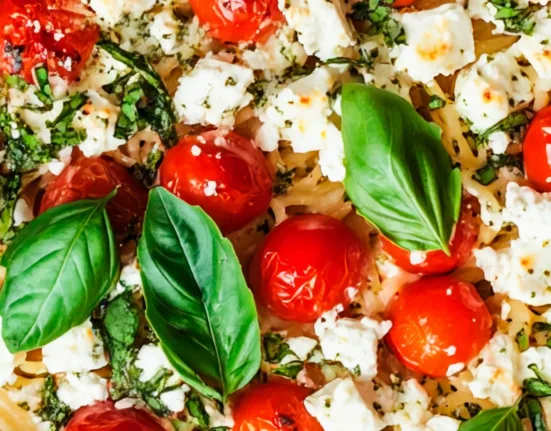Asparagus is a nutrient-packed vegetable rich in vitamins K, folate, A, C, riboflavin, and thiamin, supporting overall health and vitality. A ½ cup of cooked, boiled, or drained asparagus provides just 20 calories but delivers impressive nutrition. It contains 2.16 g of protein, 3.70 g of carbohydrates, and 1.8 g of fiber, with minimal fat (0.20 g). This serving offers 21 mg of calcium, 13 mg of magnesium, and 202 mg of potassium—important for bone health and muscle function. It’s also rich in vitamins, supplying 6.9 mg of vitamin C, 134 µg of folate, and 905 IU of vitamin A, making asparagus a nutrient-dense choice for a healthy diet.
Belonging to the Asparagaceae family, asparagus comes in several varieties, with green and violet-green types common in the U.S., while white asparagus is more popular in Europe. Naturally low in calories, fat, and cholesterol-free, asparagus offers impressive health benefits. It’s an excellent source of vitamin K, crucial for blood clotting and bone strength, and folate, which plays a vital role in DNA creation and is especially important for women planning pregnancy to reduce the risk of neural tube defects.
Additionally, asparagus provides vitamin A to support immune function and vision, vitamin C to enhance iron absorption and aid wound healing, riboflavin for growth and red blood cell production, and thiamin to help convert carbohydrates into energy. Including asparagus in your diet is an easy way to boost essential nutrients while enjoying a delicious and versatile vegetable.
More: How to master basic cooking techniques for beginners
Why Asparagus deserves a place on your plate?
Asparagus isn’t just a tasty vegetable—it’s a nutritional powerhouse. According to the National Cancer Institute, asparagus ranks as the highest tested food for glutathione, a potent antioxidant known for its cancer-fighting properties. It’s also rich in rutin, a compound that supports vascular health by strengthening blood vessels.
If you’re watching your weight, asparagus is a great choice. One cup contains only 30 calories and is virtually fat-free. Thanks to its combination of soluble and insoluble fiber, it promotes satiety by slowing digestion, helping you stay full between meals, and reducing unnecessary snacking.
Its vibrant green and purple hues aren’t just visually appealing—they signal the presence of antioxidants that help neutralize free radicals in the body. But be careful with cooking: overcooking can cause asparagus to lose both its firm texture and valuable nutrients, especially water-soluble vitamins.
Asparagus also shines when it comes to vitamin K, which plays a vital role in blood clotting and calcium absorption—making it a key player in bone health alongside other leafy greens.
When shopping, choose firm stalks with tightly closed tips. To check freshness, bend the spear—it should snap easily. Before cooking, trim the woody ends and rinse well.
With its impressive blend of health benefits and culinary versatility, asparagus is a simple way to boost both flavor and nutrition in your meals.
More: 10 superfoods for over 40


How to store, cook, and enjoy them
Asparagus is best when cooked the same day it’s bought, as it’s quite delicate. If you need to store it, keep it cold in the fridge, ideally used within 2–3 days. To keep it fresh, wrap the stem ends in a damp paper towel or stand the stalks upright in a container with about two inches of cold water.
This versatile veggie can be grilled, roasted, steamed, microwaved, or simmered on the stove. For stovetop cooking, place trimmed and rinsed asparagus upright in a saucepan with about half an inch of water. Boil uncovered for 3 minutes, then cover and cook just until crisp-tender. Use tongs to remove the spears, then toss them with a little olive oil and a squeeze of lemon juice to highlight their natural flavor without adding extra fat.
More: Irresistible vegetarian lasagna: A flavorful twist on a classic dish
Quick recipe: Asparagus with olive oil and lemon
Ingredients:
- 1 bunch of fresh asparagus
- 1 tablespoon extra virgin olive oil
- Juice of ½ lemon
- Salt and freshly ground black pepper, to taste
- Optional: grated lemon zest or freshly grated Parmesan cheese
Instructions:
Wash the asparagus thoroughly and trim off the tough, woody ends (about 1–2 inches).
In a shallow pan, add about ½ inch of water and stand the asparagus upright. Cover and steam or simmer gently for 4–6 minutes until they turn bright green and are tender-crisp. Be careful not to overcook them—they should remain slightly firm.
Drain and immediately transfer the spears into a bowl of cold water or rinse under cold water to stop the cooking and preserve the color.
In a separate pan, gently heat the olive oil over medium heat. Add the asparagus and sauté for 1–2 minutes to let them absorb the flavor.
Remove from heat, drizzle with lemon juice, and season with salt and pepper. For added flavor, sprinkle with lemon zest or a touch of Parmesan cheese.
Tip: This dish works perfectly as a light side, or as a topping for pasta, risotto, salads, or even alongside eggs for brunch.
More: How to cook chickpeas?
Source: Allergy associates of La Crosse













